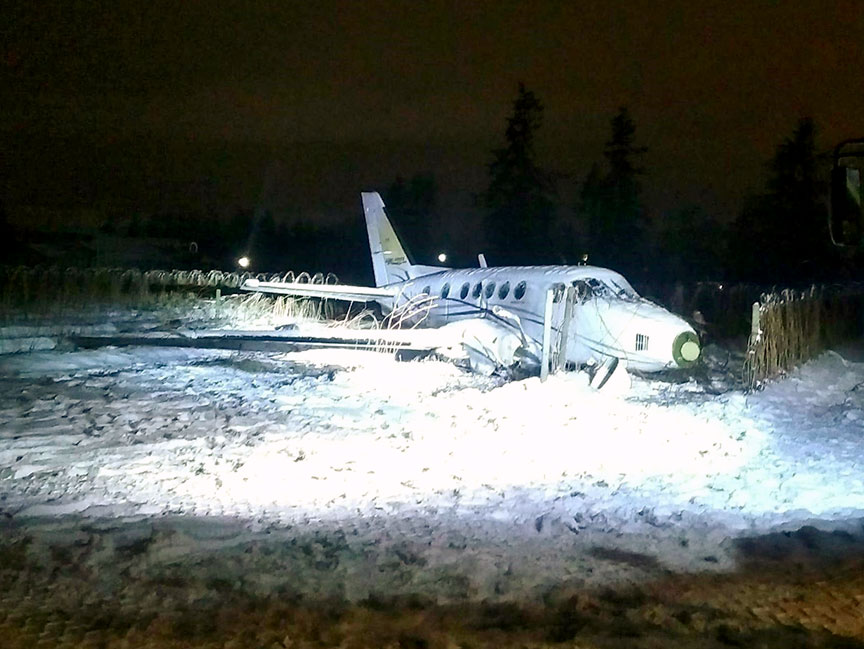Loss of control and collision with terrain
Island Express Air Inc.
Beechcraft King Air B100, C-GIAE
Abbotsford Airport, British Columbia
The occurrence
On , at 1204 Pacific Standard Time, an Island Express Air Inc. Beechcraft King Air B100 aircraft (registration C-GIAE, serial number BE-8), departed Runway 07 at Abbotsford Airport, British Columbia (BC), on a day instrument flight rules flight to San Bernardino International Airport, California, United States. On board were the pilot and 9 passengers. It was snowing at the time of departure. A few seconds after taking off, the pilot raised the landing gear. At that same moment, the aircraft veered to the left and struck the ground just north of Runway 07. Five passengers and the pilot were seriously injured. The other 4 passengers received minor injuries. The aircraft was destroyed by impact forces. The aircraft's emergency locator transmitter activated and was detected by the Cospas-Sarsat search and rescue satellite system.
Media materials
News release
Departure after 14 minutes in heavy snowfall led to 2018 collision with terrain at Abbotsford Airport
Read the news release
Deployment notice
TSB deploys a team of investigators following an aircraft accident at the Abbortsford Airport, British Columbia
The Transportation Safety Board is deploying a team of investigators following an aircraft accident at the Abbortsford Airport in British Columbia. The TSB will gather information and assess the occurrence.
Investigation information
Download high-resolution photos from the TSB Flickr page.
Class of investigation
This is a class 3 investigation. These investigations analyze a small number of safety issues, and may result in recommendations. Class 3 investigations are generally completed within 450 days. For more information, see the Policy on Occurrence Classification.
TSB investigation process
There are 3 phases to a TSB investigation
- Field phase: a team of investigators examines the occurrence site and wreckage, interviews witnesses and collects pertinent information.
- Examination and analysis phase: the TSB reviews pertinent records, tests components of the wreckage in the lab, determines the sequence of events and identifies safety deficiencies. When safety deficiencies are suspected or confirmed, the TSB advises the appropriate authority without waiting until publication of the final report.
- Report phase: a confidential draft report is approved by the Board and sent to persons and corporations who are directly concerned by the report. They then have the opportunity to dispute or correct information they believe to be incorrect. The Board considers all representations before approving the final report, which is subsequently released to the public.
For more information, see our Investigation process page.
The TSB is an independent agency that investigates air, marine, pipeline, and rail transportation occurrences. Its sole aim is the advancement of transportation safety. It is not the function of the Board to assign fault or determine civil or criminal liability.


